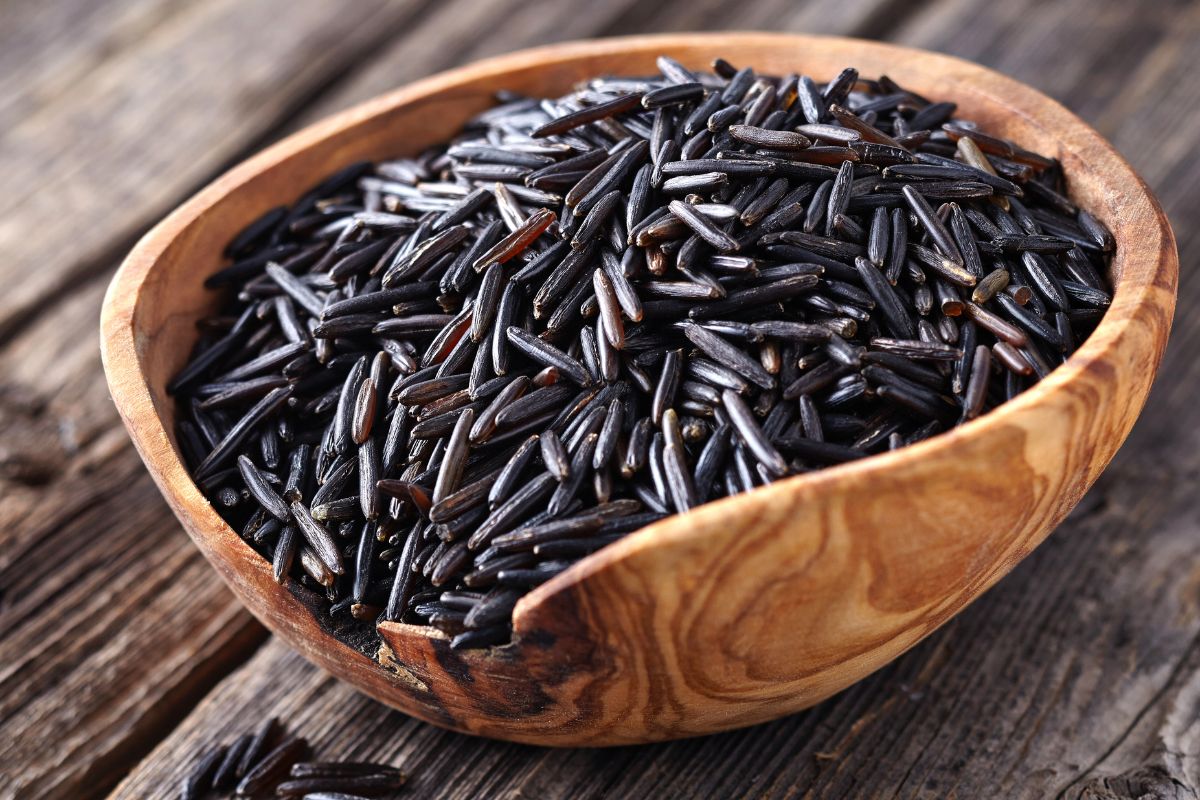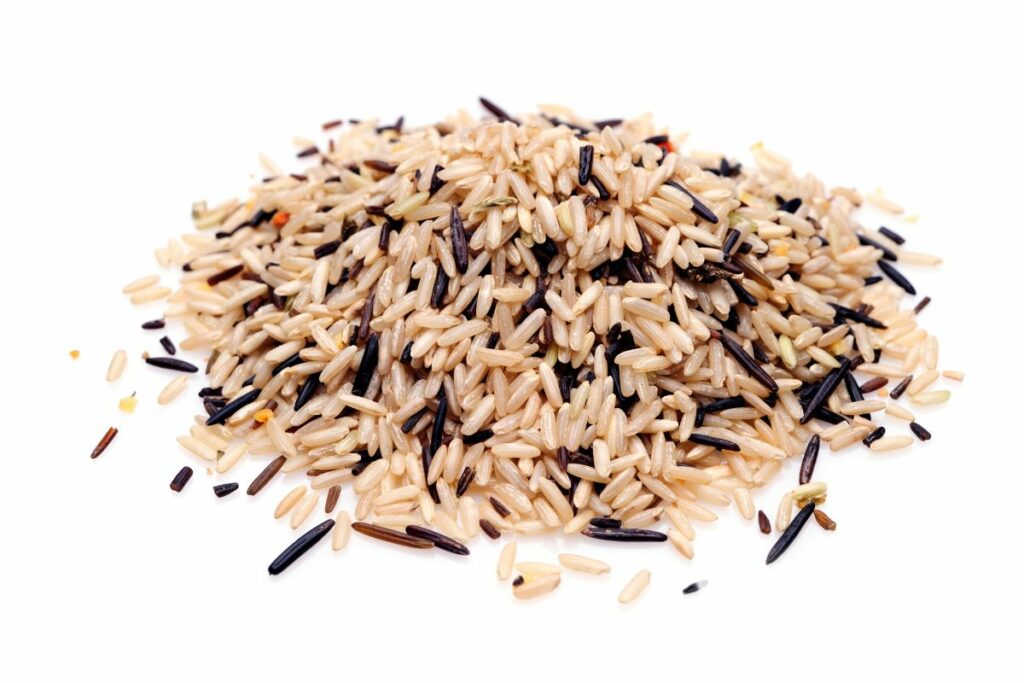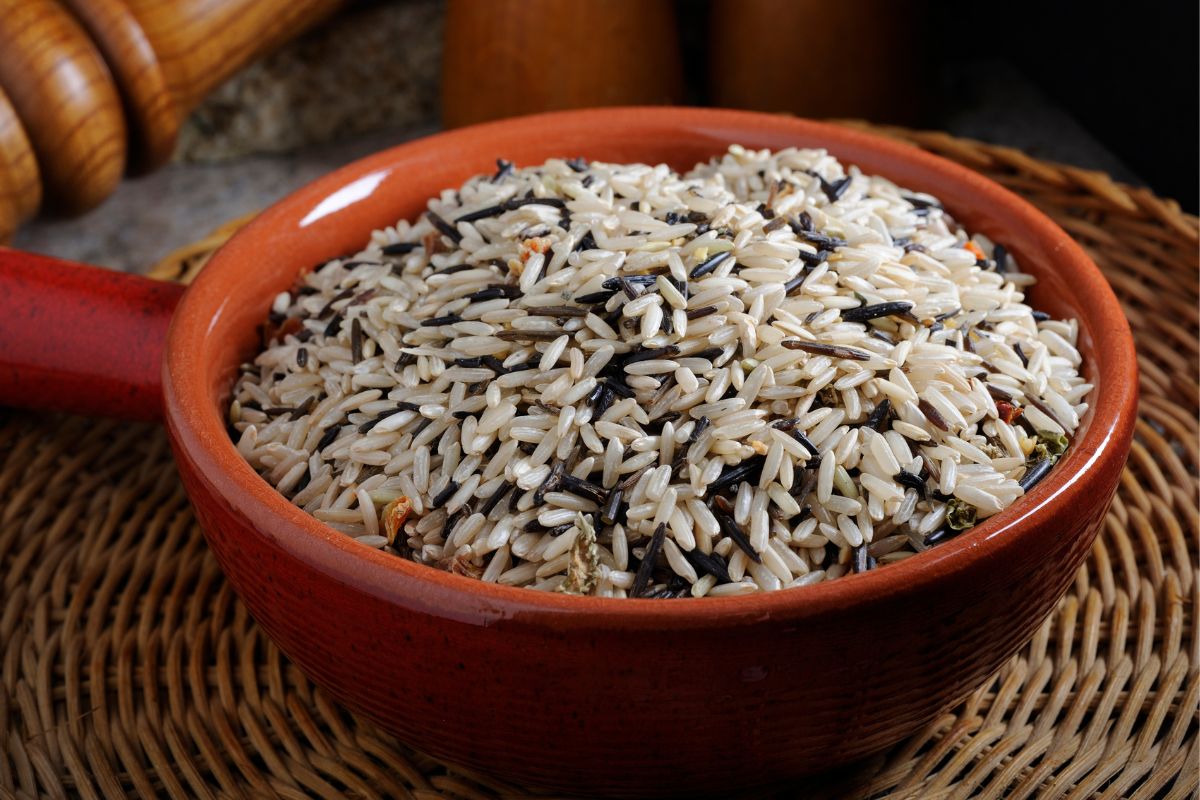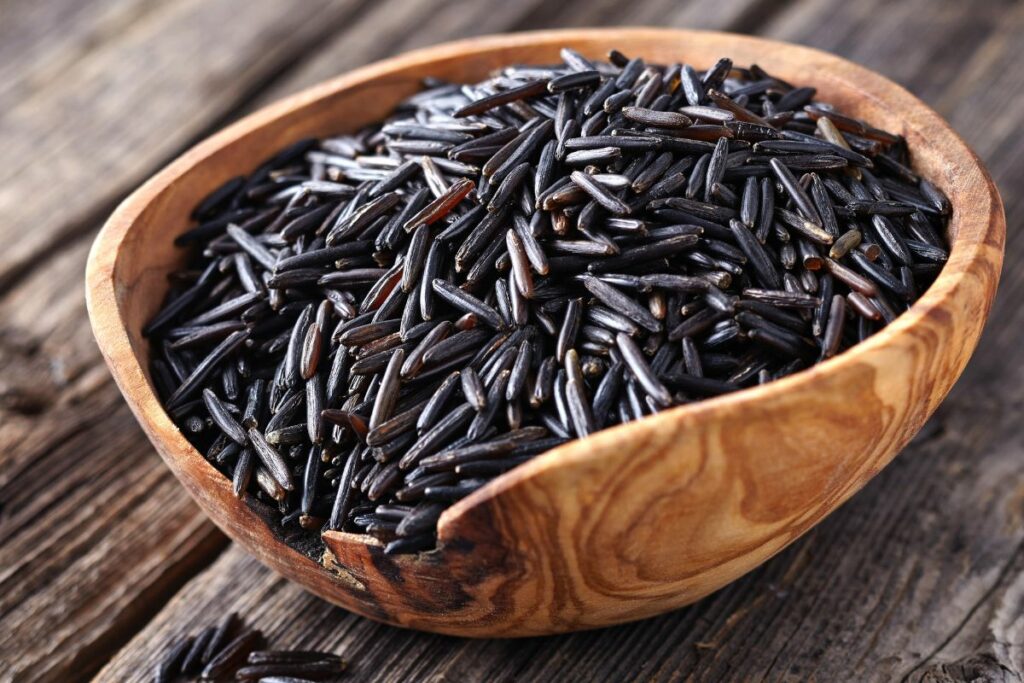With greater variety of foods, we can explore other alternatives that we may not have considered at first.
For many years, white rice was one of the staples of many cuisines around the world.
However, there are alternatives, such as wild rice, that can provide additional nutrients that we may not get from other types of rice.

In this article, we’ll explore wild rice and its nutritional benefits. Is it really good for you? And how do you cook it best?
Read on to find out.
What’s Wild Rice?
Before we take a closer look at the health benefits of wild rice, it’s a good idea to find out what it is.
Surprisingly, wild rice isn’t really a rice as we know it but it does resemble the typical brown and white rice varieties in appearance.
Wild rice, also called water oats, is a type of aquatic grass that has edible grains. These grains are harvested along the Gulf Coast and waterways in the USA.
Its stalks can grow as tall as 12 feet which makes it slightly taller than other rice plants. This is also the case for its grain, which is longer than white rice.
Is Wild Rice Good For Your Health?
Yes, wild rice is absolutely good for your health. In fact, many nutritionists recommend wild rice for its greater variety of nutrients, minerals and vitamins.
Health Benefits Of Wild Rice
There are a large number of health benefits when including wild rice in a diet. Here are some of the main advantages of this delicious grain.

High In Antioxidants
One of the biggest benefits with wild rice is that it contains almost thirty times the amount of antioxidants than white rice.
These powerful constituents help to protect your cell walls from breaking which means that you can age healthily.
Grain-Free
As wild rice is the grain taken from a marsh grass, it is not refined or polished. This means that the seed doesn’t lose any nutritional value.
This makes it ideal for special diets, such as grain-free diets, as well as diabetics.
Reduces Inflammation
Wild rice is alkaline-forming, instead of acid-forming which is the case for most other grains. This means that wild rice can help your body prevent and gently treat different types of inflammation.
Help With Weight Loss
Wild rice is a popular food with many personal coaches and trainers because it supports weight loss.
This little grain is gluten-free and low in calories, while also being high in fiber. This makes it ideal for losing weight because you simply cannot overeat with wild rice.
Strengthens Bones
As wild rice is high in phosphorus, it can help to reduce the risk of fractures and improve bone mass.
Helps Build Muscle
As part of a good exercise program, wild rice supports muscle growth because it contains a relatively large amount of protein.
Improves Digestion
The natural fiber in wild rice also supports your digestive system, which means that this nutritional grain reduces bloating (If you’re feeling bloated, you might want to check out What Is Wheat Belly? here), constipation, cramping and excessive flatulence.

Boosts Energy
Wild rice is often called a superfood because its large amount of nutrients, including a high level of magnesium, boosts the body’s energy.
Heart Healthy
Thanks to the lack of sodium (salt) in wild rice, it helps to reduce blood pressure significantly and balances cholesterol levels
Strengthens The Immune System
You can find all the essential vitamins for immune health in wild rice. These include Vitamin E, C and A.
These nutrients support the production of white blood cells which helps the body to defend itself against illnesses.
Nutrition Of Wild Rice
As you can tell from the list of all the great health benefits, wild rice contains many of the vitamins and micronutrients that our body needs daily.
Here is a quick overview of the most important nutrients in wild rice grains:
- Copper
- Phosphorus
- Folate
- Vitamin B6
- Zinc
- Magnesium
- Niacin
Thanks to its low sugar and salt content, wild rice is suitable for many different diets. Saying this, just like all foods, it should be consumed in moderation.
Drawbacks Of Wild Rice
Despite it’s positive health benefits, wild rice also has some disadvantages.
Long Cooking Time
When we are cooking white rice, we are used to a relatively quick cooking time. In about fifteen minutes, almost any type of rice is cooked to tenderness.
However, wild rice is similar to brown rice when it comes to cooking time. It can take up to 45 minutes to get it to the stage where it’s not chewy anymore.
We would recommend using a pressure cooker. This will cut down the time to around 15 minutes.
Can Contain Toxins
Similar to other grains, wild rice can contain ergot toxin, which is a fungus that can attack almost all types of different grains.
Grains that are infected with this fungus typically have purplish or pink spots. So, it’s best to check your wild rice before cooking, and remove any of the infected grains.
Can Contain Heavy Metals
Some people may be aware that rice can pick up arsenic from the ground. This can also happen with wild rice.
That’s why, it’s best to soak the rice for at least 24 hours before you cook it. This will remove some of the heavy metals.
How To Cook Wild Rice
The best way to start cooking rice is with its preparation. As wild rice can take a long time to cook, it’s a good idea to soak it overnight (or use a pressure cooker).
Make sure that you always rinse the wild rice properly, and then add it into water, and bring to the boil. Slowly simmer until the rice grains are tender.
You can test this by trying some of the rice or check what the sides look like. When the rice splits open on the side, then it is done.
Final Thoughts
Wild rice has many great health benefits and it is suitable for almost any diet, from gluten-free, vegan, vegetarian and many others.








